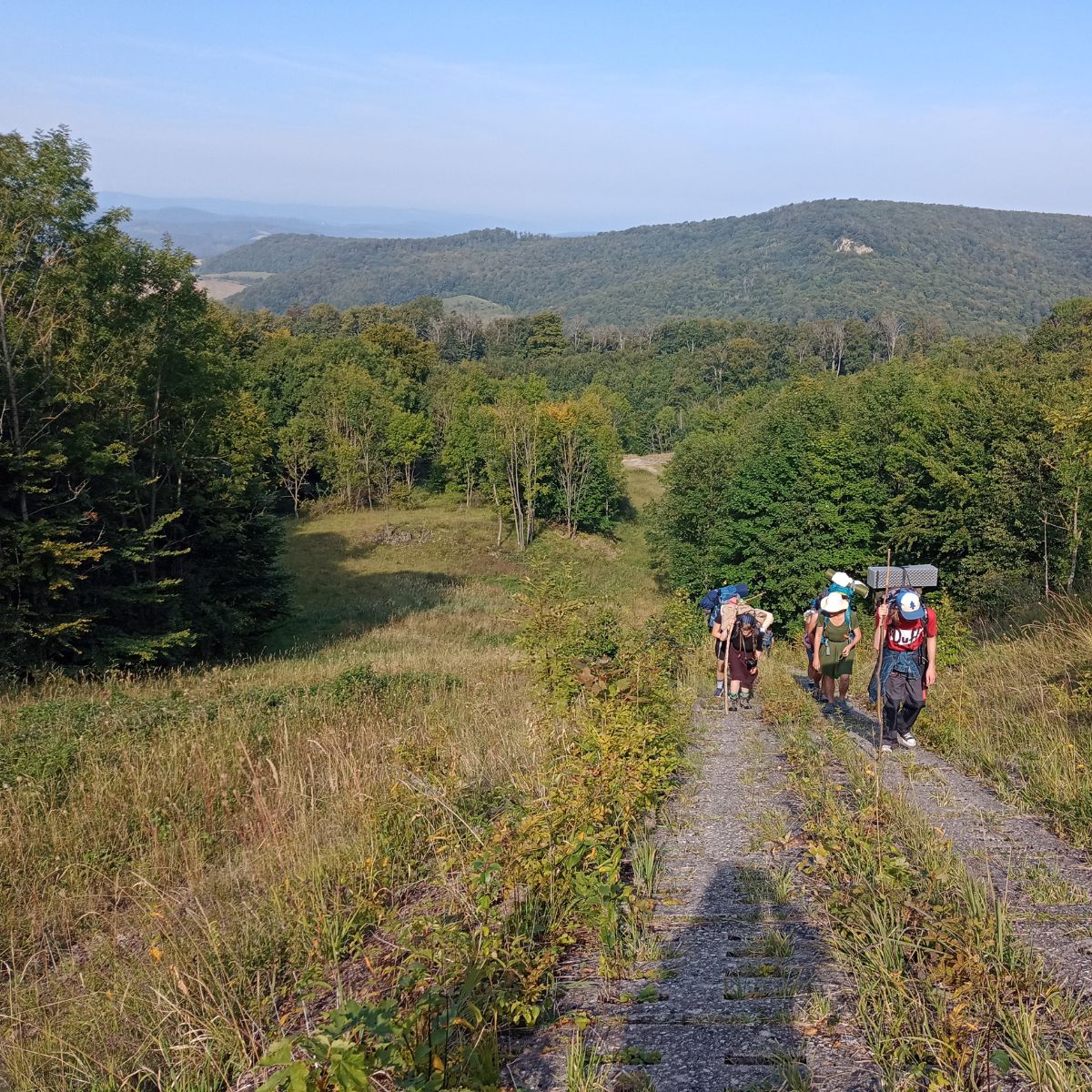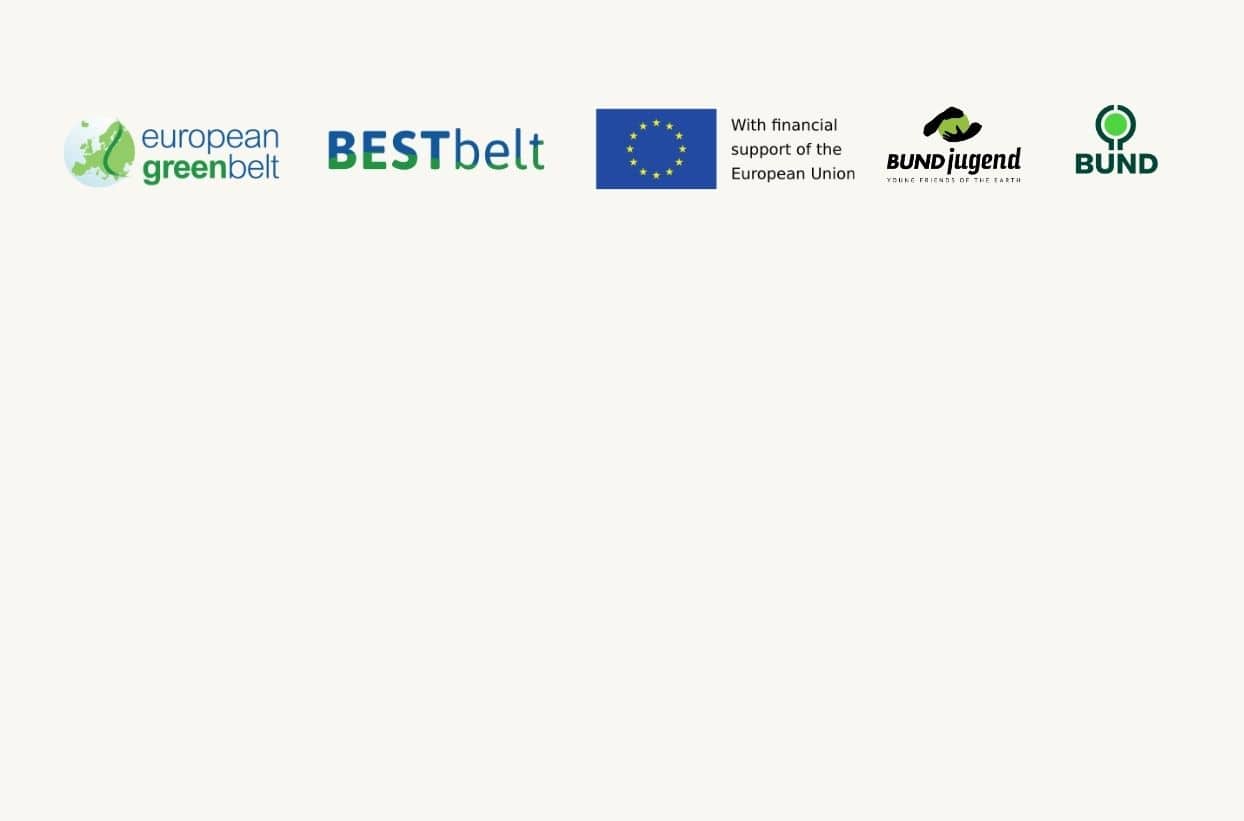Youth Leader Training at the Green Belt
Meeting at 11 AM at the station Bad Sooden-Allendorf
The Green Belt – A Place of Rare Species and Many Stories
For almost 40 years, Germany was divided. High walls, barbed wire, and watchtowers separated people on both sides. Many lost their lives trying to cross the border. In the shadow of this human-hostile barrier, more than 1,200 rare and endangered animal and plant species found refuge. Today, the Green Belt, often visible even from the air, serves as both a natural habitat and a historical monument.
Starting in 1952, East Germany (GDR) gradually reinforced its border security. Despite this, many attempted to flee, often with tragic consequences. More than 10,000 people living near the border were forcibly resettled overnight during operations such as „Ungeziefer“ and „Kornblume“ under flimsy pretexts. In their new homes, they were treated as criminals and forbidden from sharing their stories.
Hiking, Learning and Discovering
Using the example of the Werrabergland region, we will explore how a youth camp or project days could be structured. At the Schifflersgrund Border Museum, we will gain expert insights into the causes and consequences of German division. Along the Green Belt, we will search for species lost due to cultural landscape changes and discover remnants of border history, such as sites where entire villages were forcibly evacuated overnight. We will also meet contemporary witnesses who experienced these events firsthand. Experts from various fields will accompany us on our journey from Bad Sooden-Allendorf to Frieda along the Green Belt.
The training includes a „skill-sharing“ session, where participants can share their knowledge with others. If you would like to contribute to the training, please mention it when registering.
Who is this training for?
This training is primarily aimed at future youth leaders planning to take groups to the Green Belt to explore both its historical and natural traces. However, if you are simply interested in discovering the Green Belt, this training is also for you!
- Participation is open to anyone aged 16 and older.
- Free participation for individuals under 27.
- Open to participants from all over the world.
Program
Day 1:
- 11:00 AM – Individual arrival in Bad Sooden-Allendorf (accessible by public transport)
- Hike to the Schifflersgrund Border Museum, guided tour, and continued walk along the former border fortifications to Sickenberg (approx. 3.5 km)
- Evening at the campfire with contemporary witnesses
- Overnight stay at Hof Sickenberg
Day 2:
- Hike to the Gobert mountain range, exploring remnants of the border and forced resettlements between Volkerode and Hitzelrode (approx. 8 km)
- Evening session: Methods and didactics
- Overnight stay near Volkerode
Day 3:
- Hike along the Green Belt to Großtöpfer (approx. 7 km) with a guided tour on flora in the Green Belt
- Skill-sharing session
- Overnight stay near Großtöpfer
Day 4:
- Hike to Frieda (approx. 5 km)
- Individual departure from Frieda (approx. 2:00 PM)
Food and Accomodation
- Participants will mainly cook together. During the day, meals will be packed and carried in backpacks. Food is provided free of charge.
- Please inform us of any food intolerances.
- We will mainly sleep under the open sky. You can bring a tent, a hammock, or just a sleeping mat and a sleeping bag.
What to Bring?
- Sleeping bag and sleeping mat
- Sturdy shoes and weatherproof clothing
- Sun protection and tick repellent
- Packed lunch for the first section
- Water bottle



Registration and Contact Persons
Registration is binding and must be completed using the registration form below. Participants under 18 will need parental consent, which we will request via email after registration.
For any questions regarding registration, participation, or the program, feel free to contact the organizers.


Registration Youth-Leader-Training at the Green Belt
*Fields marked with a red ‚erforderlich‘ must be filled out.
Funding Notice
This event is part of our BESTbelt project: „Borders Separate – Nature Unites: European Green Belt Youth Encounters.“ The project is funded by the European Union.
